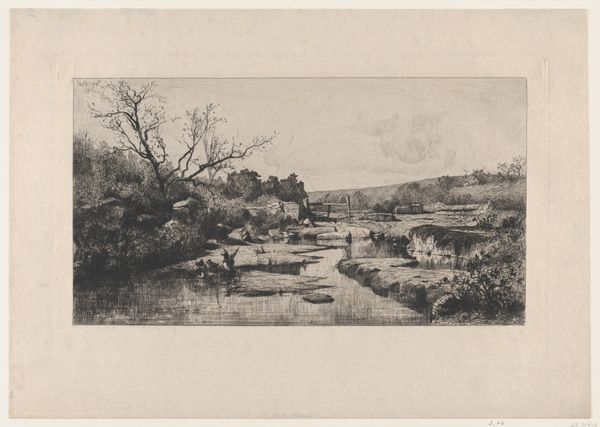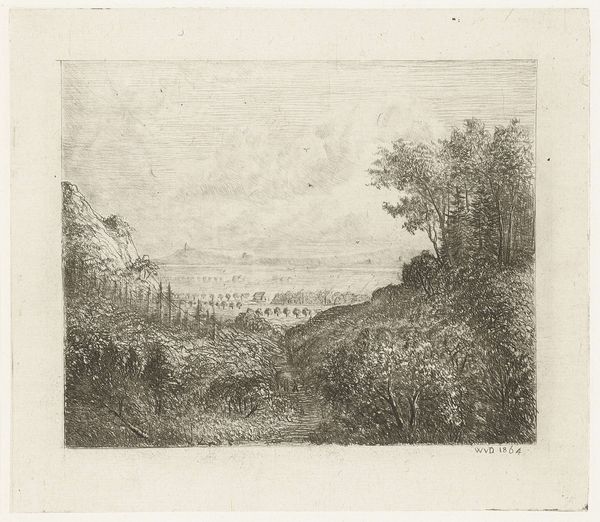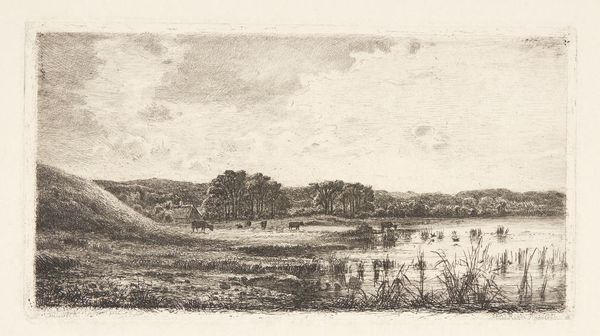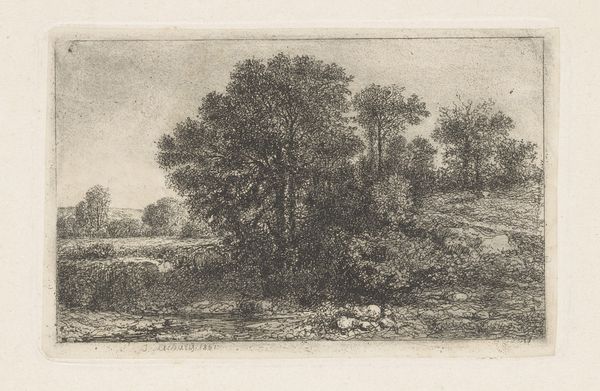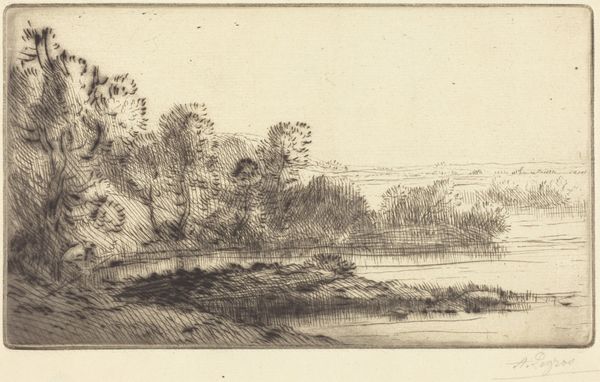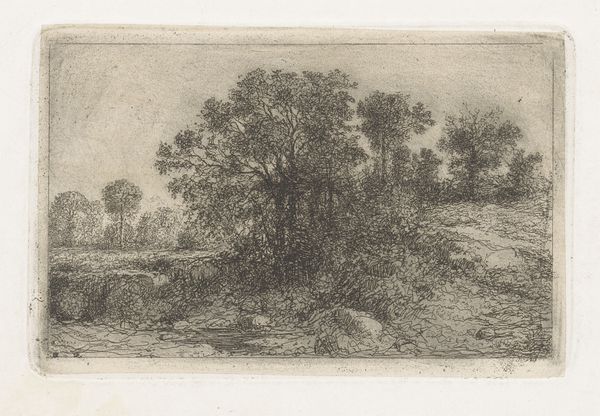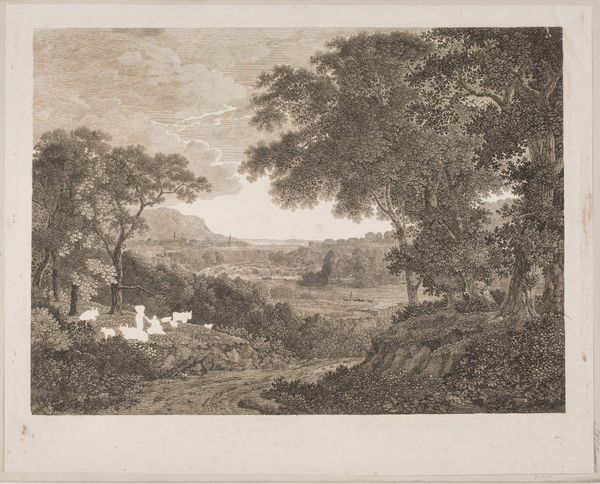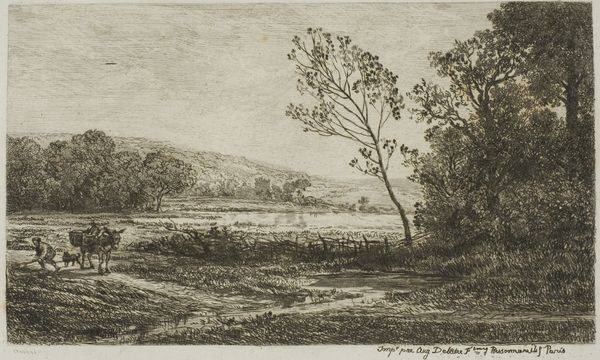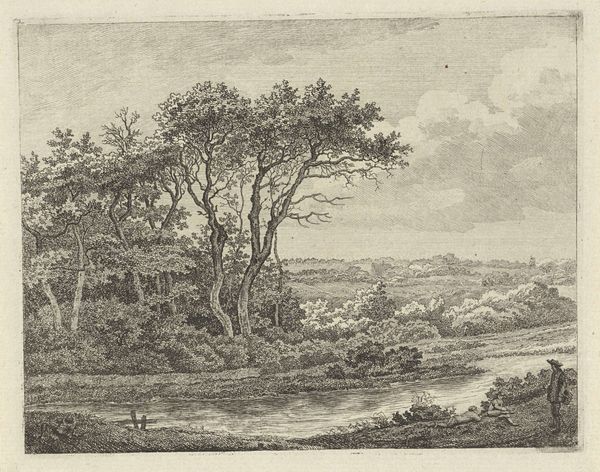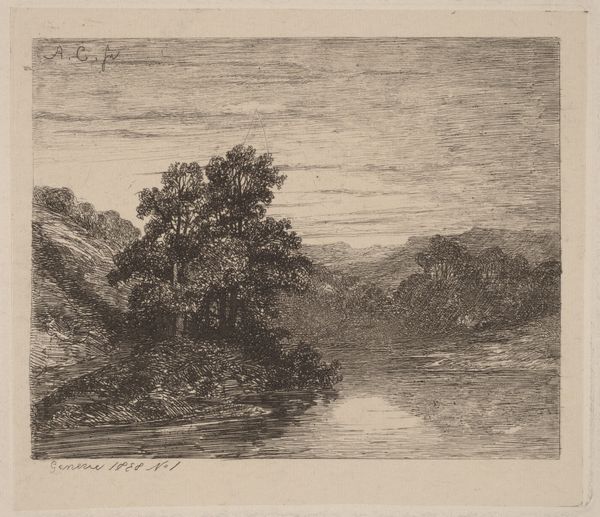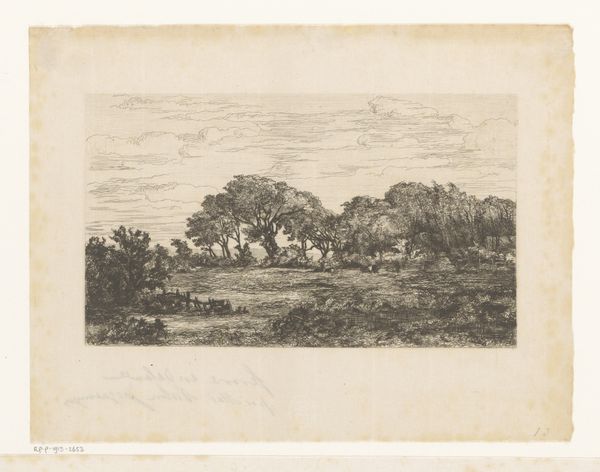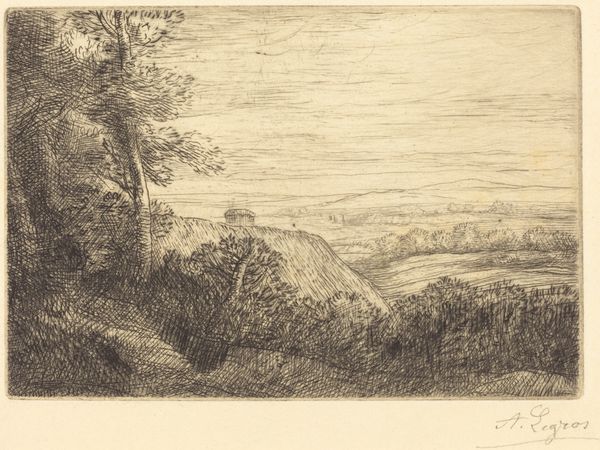
drawing, print, ink
#
drawing
# print
#
landscape
#
ink
Dimensions: plate: 15.8 × 23.9 cm (6 1/4 × 9 7/16 in.) sheet: 23 × 34.4 cm (9 1/16 × 13 9/16 in.)
Copyright: National Gallery of Art: CC0 1.0
Curator: The textures here are so rich. What are your first thoughts looking at this scene? Editor: Stark, maybe even a little oppressive? There's a heavy stillness to the whole thing. The monochromatic palette and intricate linework create this weighty, almost claustrophobic feeling, even with the open sky. Curator: Indeed. This is "Village Overlooking a Bay" by André-Marie-Paul Borel, likely created between 1880 and 1882. It’s an ink drawing, a print capturing a landscape, presumably somewhere coastal given the title. The etching provides the complexity to conjure that heavy, textured stillness. Editor: You know, thinking about that weight… I can't help but consider who this landscape *serves.* That village and its fortifications looming over everything makes me consider themes of power and social hierarchy. Curator: Absolutely. We have to consider how these scenes functioned in 19th century visual culture, and the kinds of narratives around land, ownership and labour they encoded. We can read a narrative here that speaks to enduring themes of territorial control, visible through that centralized structure overseeing its domain, its bay and dependent village, framed by this imposing technique. Editor: And there's a stark beauty in the everyday life suggested below, juxtaposed against the historical power held by the village above. I keep thinking of contemporary anxieties around ecological threat too— a pristine bay, perhaps now burdened with exploitation. Is it hopeful, ominous, or simply reflective? Curator: A pertinent question, reflecting broader societal dialogues around historical legacy, socio-political and environmental accountability. We’ve got multiple vantage points presented in just one image; Borel encapsulates nature, rurality, architecture, and political structure all with a fairly simple technique. Editor: This image is a strong reminder that landscapes aren’t neutral observations. They're loaded documents of social, historical and ecological forces at work. Curator: Exactly, a sentiment powerfully conveyed through Borel's hand. It leaves you contemplating not just the view, but also what this view really represents.
Comments
No comments
Be the first to comment and join the conversation on the ultimate creative platform.
